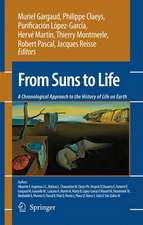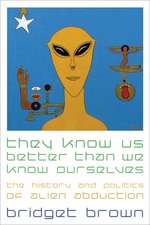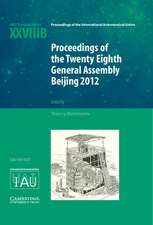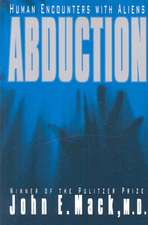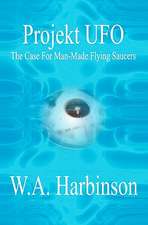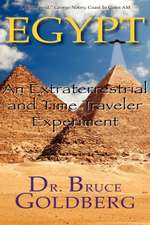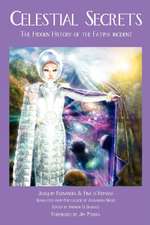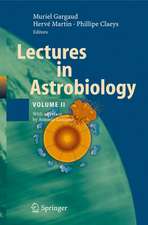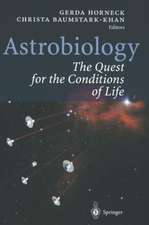Young Sun, Early Earth and the Origins of Life: Lessons for Astrobiology
Autor Muriel Gargaud, Hervé Martin, Purificación López-García, Thierry Montmerle, Robert Pascal Traducere de Storm Dunlopen Limba Engleză Paperback – 11 ian 2013
- How was the Earth formed?
- How long has Earth been the way it is now, with its combination of oceans and continents?
- How do you define “life”?
- How did the first life forms emerge?
- What conditions made it possible for living things to evolve?
All these questions are answered in this colourful textbook addressing undergraduate students in "Origins of Life" courses and the scientifically interested public. The authors take the reader on an amazing voyage through time, beginning five thousand million years ago in a cloud of interstellar dust and ending five hundred million years ago, when the living world that we see today was finally formed. A chapter on exoplanets provides an overview of the search for planets outside the solar system, especially for habitable ones.
The appendix closes the book with a glossary, a bibliography of further readings and a summary of the Origins of the Earth and life in fourteen boxes.
Preț: 497.96 lei
Nou
Puncte Express: 747
Preț estimativ în valută:
95.28€ • 99.75$ • 78.84£
95.28€ • 99.75$ • 78.84£
Carte disponibilă
Livrare economică 17-31 martie
Preluare comenzi: 021 569.72.76
Specificații
ISBN-13: 9783642225512
ISBN-10: 3642225519
Pagini: 300
Ilustrații: XII, 301 p. 303 illus., 250 illus. in color.
Dimensiuni: 193 x 260 x 22 mm
Greutate: 0.66 kg
Ediția:2012
Editura: Springer Berlin, Heidelberg
Colecția Springer
Locul publicării:Berlin, Heidelberg, Germany
ISBN-10: 3642225519
Pagini: 300
Ilustrații: XII, 301 p. 303 illus., 250 illus. in color.
Dimensiuni: 193 x 260 x 22 mm
Greutate: 0.66 kg
Ediția:2012
Editura: Springer Berlin, Heidelberg
Colecția Springer
Locul publicării:Berlin, Heidelberg, Germany
Public țintă
Lower undergraduateCuprins
Formation of the Sun and the planets.- Formation and Early Childhood of the Earth.- Water, Continents and Organic Matter.- Intermezzo: Gestation of Life and its First Steps.- Late Bombardment.- Messages from the Most Ancient Terrestrial Rocks.- Diversification of Life on Planet Earth.- Exoplanets and habitability of planets.- Epilogue.- Classification of Rocks.
Recenzii
From the reviews:
“This book is a great source of information that nicely links up everything that you need to know about in astrobiology, and it’s accompanied by many schematics and illustrations that help a lot in understanding the text, as well it comes with a very helpful glossary in the end of the book.” (Kadri Tinn, AstroMadness.com, February, 2014)
“The book focuses on the chronology of events that led to the appearance of life on Earth, from the formation of the solar system by inert matter 4,57 billion years (4.57 Ga) ago to the Cambrian explosion of lifeforms, 540 million years ago, when the living world that we see today was finally formed. … The colorful new. amazing textbook is intended for undergraduate students of any field of natural sciences and engineering, and for any scientifically interested reader at all.” (Claudia-Veronika Meister, zbMATH, Vol. 1279, 2014)
“This book is a great source of information that nicely links up everything that you need to know about in astrobiology, and it’s accompanied by many schematics and illustrations that help a lot in understanding the text, as well it comes with a very helpful glossary in the end of the book.” (Kadri Tinn, AstroMadness.com, February, 2014)
“The book focuses on the chronology of events that led to the appearance of life on Earth, from the formation of the solar system by inert matter 4,57 billion years (4.57 Ga) ago to the Cambrian explosion of lifeforms, 540 million years ago, when the living world that we see today was finally formed. … The colorful new. amazing textbook is intended for undergraduate students of any field of natural sciences and engineering, and for any scientifically interested reader at all.” (Claudia-Veronika Meister, zbMATH, Vol. 1279, 2014)
Notă biografică
Muriel Gargaud is an astrophysicist at the University of Bordeaux and at the CNRS. She is an experience editor and author in the field of astrobiology.
Purificación López-García is a biologist and research director at the CNRS.
Hervé Martin is a geologist and teaches at the University of Clermond-Ferrand.
Thierry Montmerle is professor at the Institut d'Astrophysique de Paris.
Robert Pascal is a chemist at the CNRS and at the University of Montpellier.
Purificación López-García is a biologist and research director at the CNRS.
Hervé Martin is a geologist and teaches at the University of Clermond-Ferrand.
Thierry Montmerle is professor at the Institut d'Astrophysique de Paris.
Robert Pascal is a chemist at the CNRS and at the University of Montpellier.
Textul de pe ultima copertă
- How did the Sun come into existence?
- How was the Earth formed?
- How long has Earth been the way it is now, with its combination of oceans and continents?
- How do you define “life”?
- How did the first life forms emerge?
- What conditions made it possible for living things to evolve?
All these questions are answered in this colourful textbook addressing undergraduate students in "Origins of Life" courses and the scientifically interested public. The authors take the reader on an amazing voyage through time, beginning five thousand million years ago in a cloud of interstellar dust and ending five hundred million years ago, when the living world that we see today was finally formed. A chapter on exoplanets provides an overview of the search for planets outside the solar system, especially for habitable ones.
The appendix closes the book with a glossary, a bibliography of further readings and a summary of the Origins of the Earth and life in fourteen boxes.
- How was the Earth formed?
- How long has Earth been the way it is now, with its combination of oceans and continents?
- How do you define “life”?
- How did the first life forms emerge?
- What conditions made it possible for living things to evolve?
All these questions are answered in this colourful textbook addressing undergraduate students in "Origins of Life" courses and the scientifically interested public. The authors take the reader on an amazing voyage through time, beginning five thousand million years ago in a cloud of interstellar dust and ending five hundred million years ago, when the living world that we see today was finally formed. A chapter on exoplanets provides an overview of the search for planets outside the solar system, especially for habitable ones.
The appendix closes the book with a glossary, a bibliography of further readings and a summary of the Origins of the Earth and life in fourteen boxes.
Caracteristici
A first colourful introduction into Astrobiology Provides the reader with a much deeper understanding of the formation of planets and the origin of life Illustrates the geological history of planet Earth in the context of the emergence of life Colourful presentation of the origins of the solar system, the Earth and life on Earth Comprehensible yet scientifically profound Enhanced by an appendix comprising a glossary, bibliography of further reading and a summary of the Origins of Earth and life in 7 boxes Includes supplementary material: sn.pub/extras

